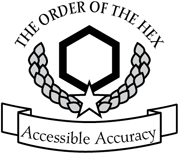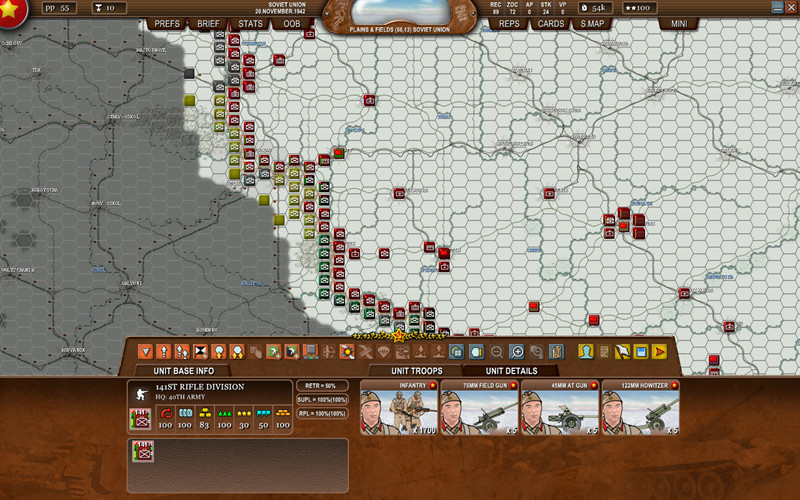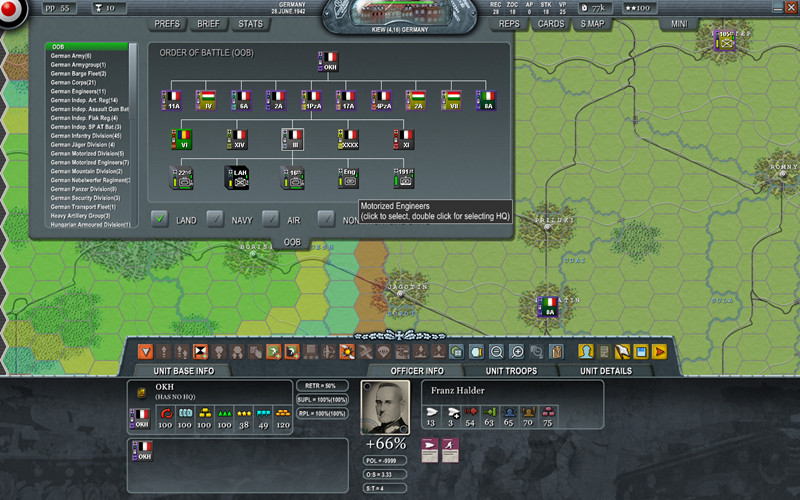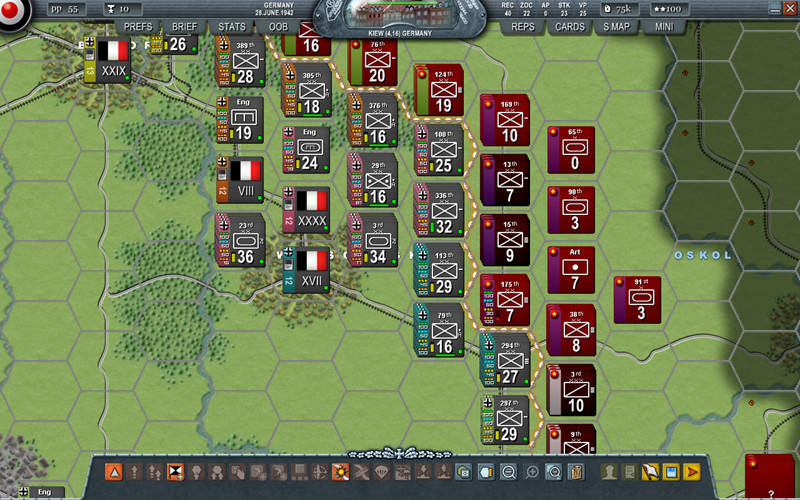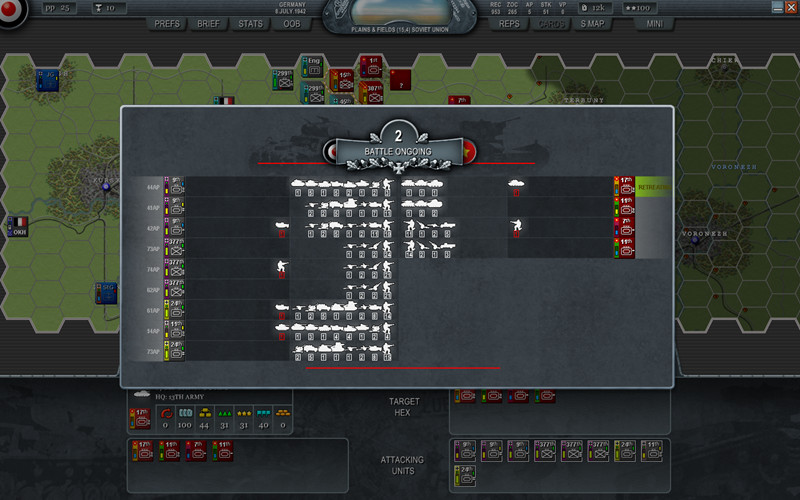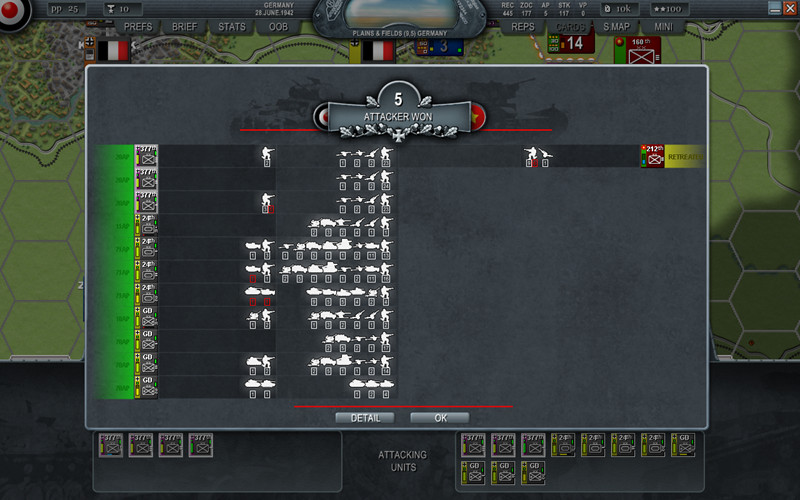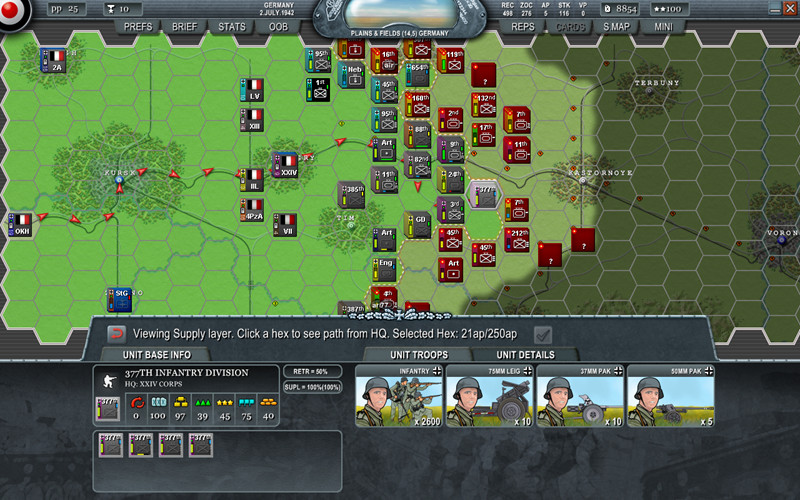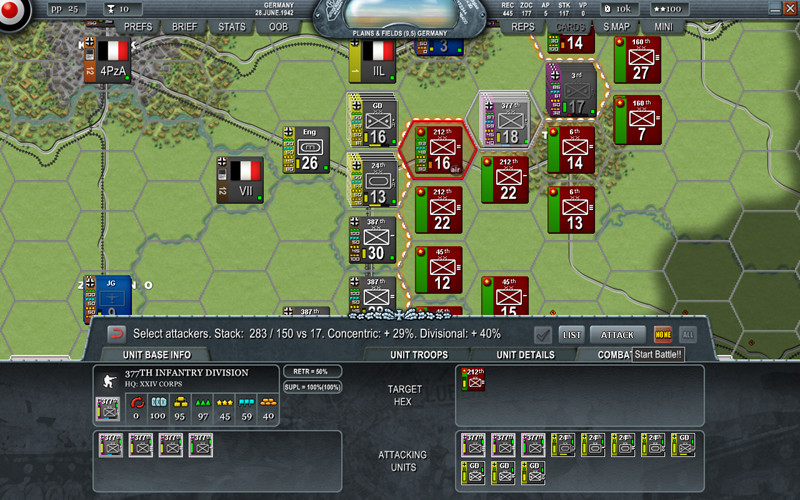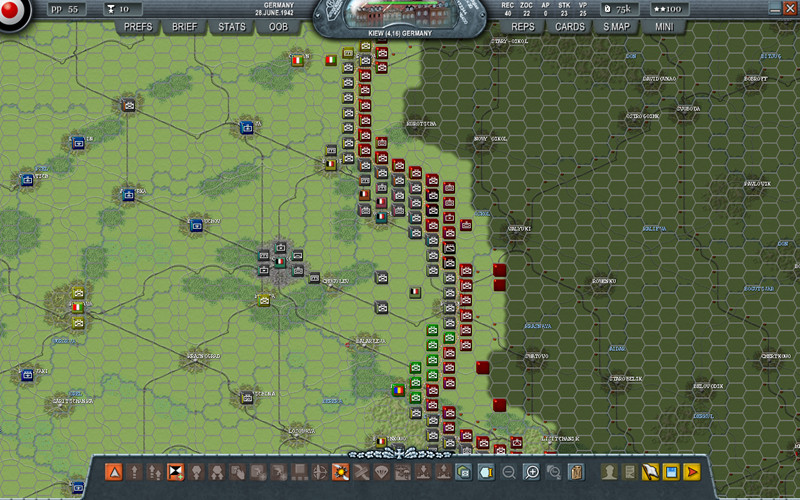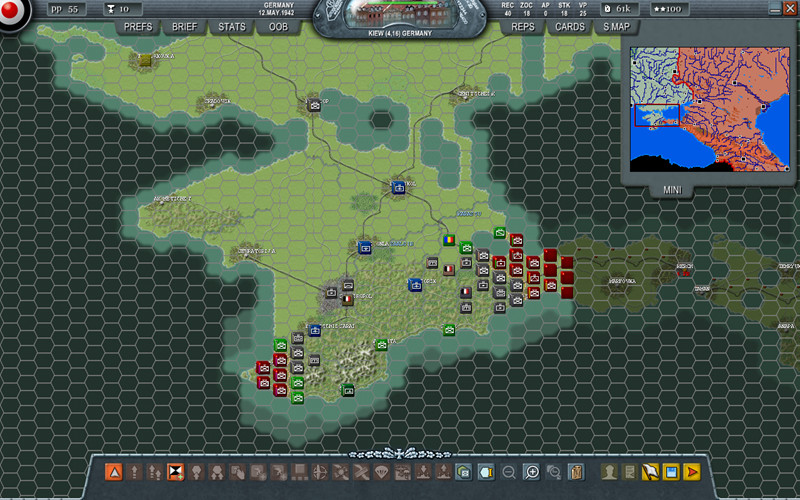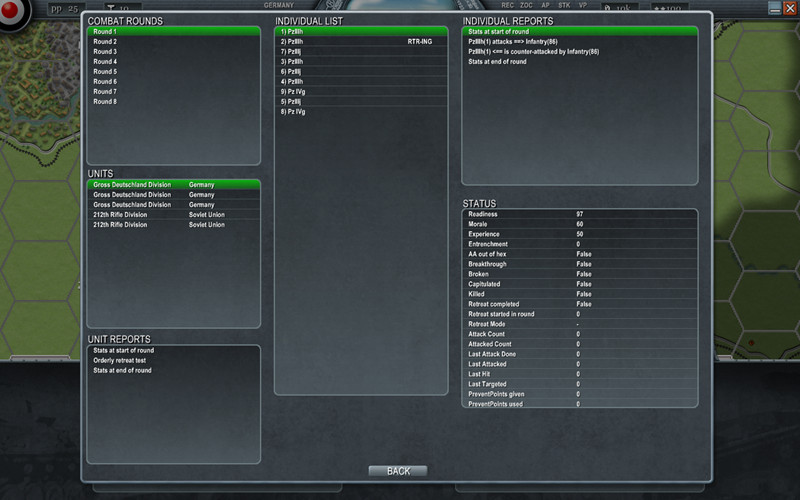 |
Keep Calm and Grog On! |
|
| Home | About Us | Article Index | Forums | Dice | GrogShop | GH ON FACEBOOK | GrogNews |
Let Your Grog Flag Fly!Recent ArticlesGARPA 17, 4/26/13 SimCity AAR Part 1, 4/25/13 Announcing MayViation, 4/24/13 Second Look at Wargame AirLand Battle, 4/21/13 First Look at Wargame AirLand Battle 4/19/13 AAR of Dark Age Minis Battle, 4/18/13 Video Review of Zulus on the Ramparts, 4/14/13 GARPA 16, 4/12/13 Crusader Kings II AAR Part 16, 4/11/13 Book Review: Ninja: 1000 Years of the Shadow Warrior, 4/10/13 Review of Bioshock INfinite, 4/7/13 Review of XFX PRO650W Core Edition PSU, 4/5/13 Civilization V AAR, Part 13, 4/4/13 Fire with Fire, 3/31/13 GARPA 15, 3/29/13 Civilization V AAR, Part 12, 3/28/13 Wheaton INterview, 3/27/13 March Mayhem Winner, 3/25/13 Warlock Multiplayer AAR, 3/21/13 WWII PTO Alternate Histories, 3/20/13 GARPA 14, 3/15/13 Crusader Kings II AAR, part 15, 3/14/13 Civilization V AAR, part 11, 3/7/13 Prezcon Convention Coverage, 3/2/13 Civilization V AAR, part 10, 3/3/13 |
Decisive Campaigns From Warsaw to Paris, Victor Reijkersz ’ first foray into historical operational games continues to be very popular. However, moving from the confines of Western Europe in 1939-1940 to the East Front in 1942 is like switching from the shallow end of the pool to the highest diving board at the deep end. Can Decisive Campaigns Case Blue make the transition? Informative Eye-CandyAlthough Case Blue may visually resemble From Warsaw to Paris, many changes to all aspects of play are evident. The zoomable map is a typical board-game type map with forty-km hexes and weekly turns. Each hex has a stacking limit over which units lose combat efficacy. Units are regiments, headquarters, and air groups. Smaller specialized units are also available. Combat units on the map have NATO symbols along with indicators for seven values such as readiness, and supply. Headquarters are marked with national flags, supply status and the all-important command points.
Units are described in more detail in the unit tab along the screen’s bottom. Depicted are the unit’s designation, the seven values including action points and individual images for each type of troops or weapons in the division. The headquarter details concentrate on the commander, showing combat bonus in percent, information on staff and seven command abilities. The officer’s mug shot is a nice touch but the number and type of action cards he can play is more important. A nice innovation is the ability to hide this tab, showing more of the map. Other graphics include seven drop-down windows showing OOBs, reports, and a mini-map among other information. The font and graphic quality of over twenty-five action cards have been improved with the 1.02c patch. Frontline boundaries and supply paths are very sharp.
Alterations to FitCase Blue was the name of the plan for the 1942 German offensive to capture the Caucasus oilfields that ended up instead with the 6th army being sucked into the Stalingrad abattoir. The developer understands that this particular operation requires more than just OOBs and situation maps to simulate the battles’ unique flavor while still making it accessible to all players. Twenty-six system changes from From Warsaw to Paris demonstrate the work that went into the new game.
The basic mechanics stay the same. A selected unit is controlled by an orders bar. The symbol for single unit move highlights reachable hexes and the group movement does the same for all units in a hex. A unit’s headquarters can be changed with a click to take advantage of a better staff. Units starting on a rail hex can use strategic transfer to move long distances. Combat requires the target unit be selected after which a list of possible attacking units allow players to pick units to engage it. Artillery can attack over two hexes and air assets can fly over significant distances. New features are shore bombardment and amphibious landings around the Black Sea. Land combat, limited like movement by available action points, is between adjacent units with attackers getting bonuses from headquarters, committing units from the same division and coming from two or more directions. Air and artillery cause some damage and force enemy units to use action points, but it is the ground forces that do the real damage. Battles, fought in rounds, are displayed in an abstract screen with each regiment having its elements shown in silhouette on its own line. Elements running out of action points or retreating fall back to a side. Rounds end when one or both sides run out of points, is eliminated or flees. A detailed screen gives a blow-by-blow description of the rounds. Large battles create battle delay points that may prevent advances into abandoned hexes.
Yet, many variables in the movement, combat, and strategic algorithms have been changed to fit the circumstances of Case Blue. Weather affects movement with the addition of mud and weather seasons. Supply comes straight from high command, OKH or STAVKA, to headquarters and combat units instead of through a chain of command. Oil shortages slow the panzers. Artillery ammunition can be stockpiled before a major operation. The differences between German and Russian rail gauges are incorporated. Encircled units can be supplied by air. Replacements and reinforcements arrive on a schedule shown in a PDF guide. Combat units receive replacements by a priority set by the player. The rules for minor Axis powers speak to what happens when things go badly as reflected in prestige points. Partisans, militia, and Cossacks make Axis rear areas unstable.
The truly innovative and exciting aspect of Case Blue is the interaction between off-board high command, on-board headquarters, and combat units. Corps officers have a multitude of action cards that can improve units’ movement, combat, recon, morale, and supply. The number and effectiveness of cards an officer has is a function of his capabilities. Playing a card cost command points. High-level cards are played by Fronts or Armies and affect lower headquarters in much the same fashion as low-level cards and can enhance staffs. Regime cards are played to affect decisions in Berlin or Moscow by requesting more troops at the cost of prestige and political points.
The handling of officers thus becomes crucial. To have a free rein, players should have large amounts of prestige points to hire and fire generals. Prestige points are gained by meeting objectives. This apparently simple task is made difficult for the Germans as Berlin has no idea what the front is like and will change objectives. Both sides can receive “No Step Back” orders if the situation is very bad. The Russian’s problems with command are depicted with “Out of Depth” commanders whose organizational capabilities are so low that his units lose 25% of their efficiency. This game’s interlocking of officer capability, prestige, and action cards reflect the complexity of a large campaign with finesse and elevate play above click, move and shoot.
Trimming the MonsterThe scale of the Eastern Front is so vast in terms of geography and troops committed that most simulations of it are either simplistic or extremely complicated. Case Blue hits a middle path not only by the ease of orders and action cards but also by providing short scenarios. Second Kharkov portrays the premature Russian offensive before the German attack, while Voronezh deals with the first weeks of Case Blue. Case Blue itself and the December Russian offensive, Uranus, have short versions covering just the early months of each operation. Of course, full versions of both, complete with special rules and variants, are provided. “Trappenjagd” brings in the fighting in the Crimea as well as the conflict up north. Finally, a four-scenario linked campaign allows players to command the First Panzer Army to glory or dismissal.
Unique in Eastern Front games, Case Blue gives players the feel for the Eastern Front but without bloating the system or slighting detail. The AI is rigorous and will jump on mistakes. The concept of prestige, action cards, ease of interface, and variety of scenarios make Case Blue a premier game. The developer should continue this historical path. An editor and PBEM will guarantee a long stay on players' hard drives.
Grumpy Grog Says: Finding a sweet spot on the Eastern Front is tougher than supplying Stalingrad by air. This is a must-have for wargamers looking for the right mix of detail and abstraction on the Eastern Front.Discuss it in our forums here! About the AuthorJim Cobb has been playing board wargames since 1961 and computer wargames since 1982. He has been writing incessantly since 1993 to keep his mind off the drivel he dealt with as a bureaucrat. He has published in Wargamers Monthly, Computer Gaming World, Computer Games Magazine, Computer Games Online, CombatSim, Armchair General, Subsim, Strategyzone Online and Gamesquad |
Please support the folks that support GrogHeads
|
Copyright ©2012-2019, Grogheads, LLC. All rights reserved in the United States and throughout the world. All other products and copyrights mentioned on Grogheads, LLC are the property of their respective companies, and Grogheads, LLC makes no claim thereto.
GrogDice - Refresh the screen to roll a new set!
Or go here to roll a LOT of dice
